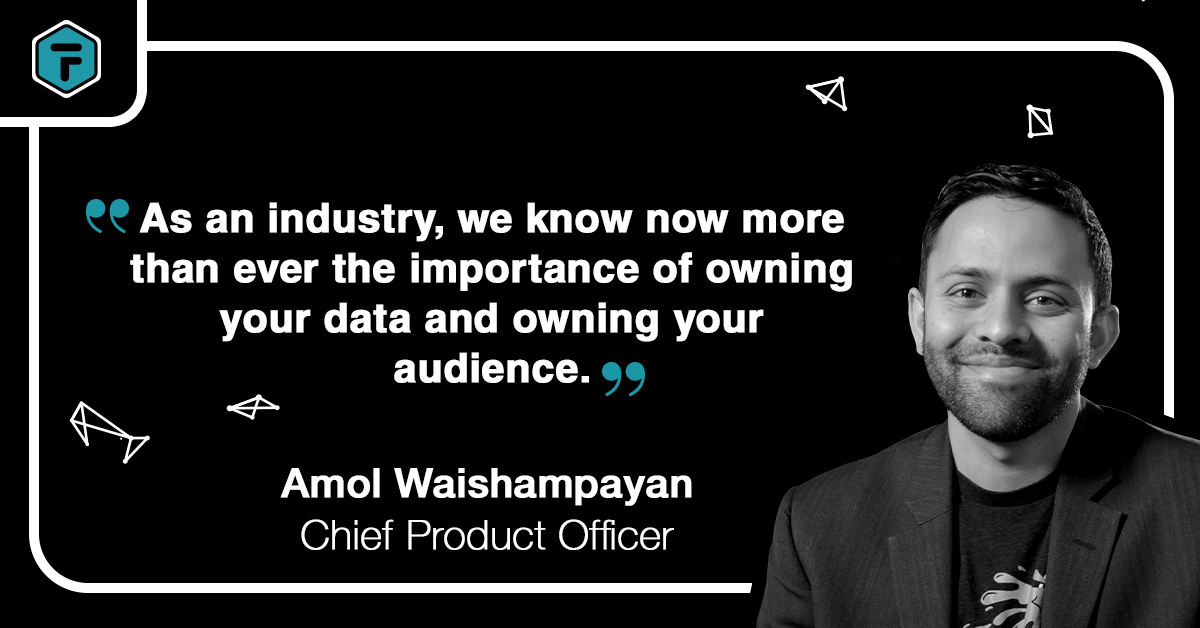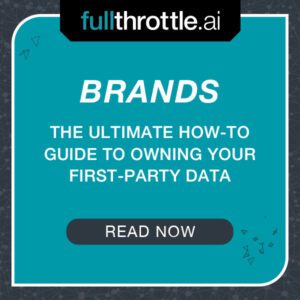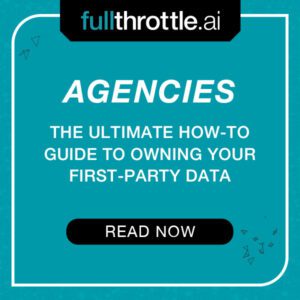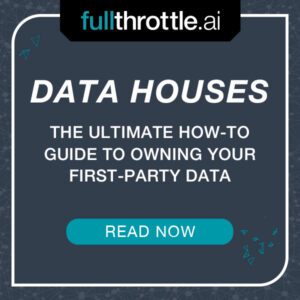
Why It’s Important for Brands, Media Companies, Agencies, and Publishers To Create a First-Party Data Plan
There has been a lot of talk and chatter in the marketing and advertising space regarding the demise of third-party cookies and what that really means for agencies, media partners, companies, and varied brands.
As an industry, we know now more than ever the importance of owning your data and owning your audience.
Let’s discuss exactly what that means, how to do it, and what to do once you own your data.
Why Is It Important for Businesses To Own Their Data?
In a world where there are no more cookies or mobile IDs and IDFA, you need to have first-party data, like a household address—things that are typically in your database. You need this to hone in on and focus your advertising to the right audience.
What it means to own your data is that you know exactly what that list is. You know the audiences on those lists. You know who that audience is comprised of.
For large businesses, like agencies or large brands, their audiences are anonymous, cookie-based, and may sit in a DSP.
For small businesses, they might have a retargeting pixel on their website. This could be a Facebook or a Google pixel, which are the most common ones to use when retargeting audiences. Again, they are cookie-based—you do not actually know who is within that list.
Lastly—and more importantly—you do not own it.
Let’s Use an Example
You are remarketing and you have retargeting audiences that you think you own that sit in your Google ads.
What happens when you no longer use Google ads or you want to use something else? What if Google decides they want to change their platform? You are no longer going to have access to those audiences, even though you put the Google pixel on your site. You have essentially let them create an audience for you. However, you do not have direct access to the audience names on that list. They belong to Google.
This is the same with Facebook and other third-party cookie companies. So, if you put your Facebook audience pixel on your site and Facebook is collecting your audience, they own it—not you.
You can go into Facebook ads and select the audience you would like to hit. However, you do not own it. You cannot download it.
Owning your data is, as you know, a buzzworthy statement. It is something that people talk a lot about. What does this really mean? At the end of the day, it is essentially a list of first-party data that you can have and see the details of. Then, you can bring that data anywhere you want to activate it.
What Is the Cookiepocalypse?
The “cookiepocalypse” refers to the demise of Google’s third-party cookies and how it will affect advertising and marketing practices. As privacy laws are enacted, browsers change to stay compliant.
Some questions we all need to start asking and thinking about are:
- How has or how will the cookiepocalypse affect data going forward?
- How will it affect the brand’s ability to gather accurate data?
- How will it denigrate the data they currently have?
There Are Several Events Happening in AdTech
Most businesses are only collecting about 50% of third-party data, as Safari and Firefox ended support for third-party cookies a while ago. This percentage will only continue to decline.
Safari and Firefox made cookie changes and Google is being forced to make the same change—whether they want to or not—in order to stay in line with privacy legislation. The ability to track using older legacy technology will go away.
What the world of advertising technology is moving toward is working from lists and activating them. Let's simplify all the buzzwords out of it. For example, if you have a list of real people and real households, we’re going to help you activate that list. It’s great that the entire tech and AdTech industry is moving towards that solution.
The Data Famine
Everyone is moving towards first-party data—hopefully with an understanding that they won’t have cookie-based audiences. Retargeting won’t be as meaningful as the audiences housed in Facebook and Google get smaller and smaller. They will also become more expensive to reach, since there will be less opportunity to do so, due to the demise of cookies.
Advertisers and brands will need to determine what first-party data they have and how accurate it is.
The challenge is that the world still lives in a desert of first-party data. This is where we see the data famine. Really, the only data you have is around what is in your database from past transactions or marketing opt-ins.
Retailer Example of First-Party Data
For example, let’s say you are a big furniture retailer. The first-party data you can bring to the table is the people who have purchased from you before and live in your database and the leads you’ve collected in your customer management database. Maybe they did not buy—but they gave you their information.
These are great starting points: people who have bought from you before and prospective buyers.
However, that is looking in the rearview mirror.
Guessing that they might still be in the market for what you are selling is not looking through the forward windshield.
fullthrottle.aiTM Leads the Way to an Abundance of First-Party Data
At fullthrottle.aiTM, we want to escort our industry out of the data famine by moving it to where we can create a ton of rich, first-party data.
We help convert all those outdated third-party audiences into true first-party in-market households—and it is done daily, in real time. The list we provide is not people who have bought from you a year ago, a month ago, or two years ago. We offer real-time conversion of the anonymous, cookie-based audiences, which soon no one is going to have access to anyway.
We want to see the whole industry continue to move towards creating rich, first-party data and seeding in a world where, once we move to it, we are not experiencing a data famine. We want to see truly great first-party data. To begin your journey out of the data famine, schedule your demo here.
Make sure to read the next in the series.




